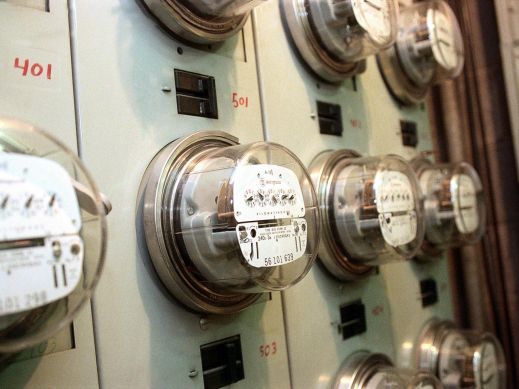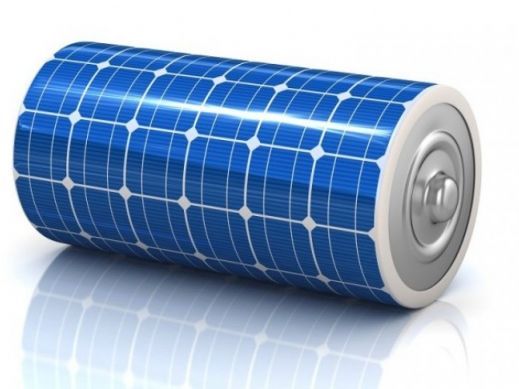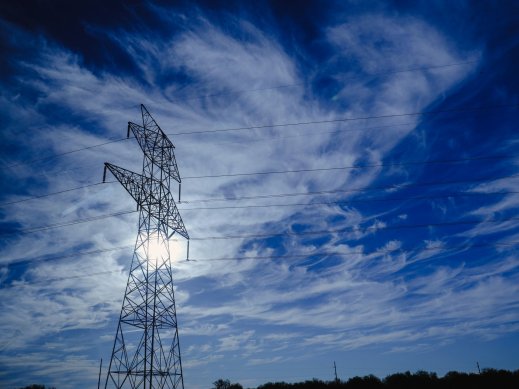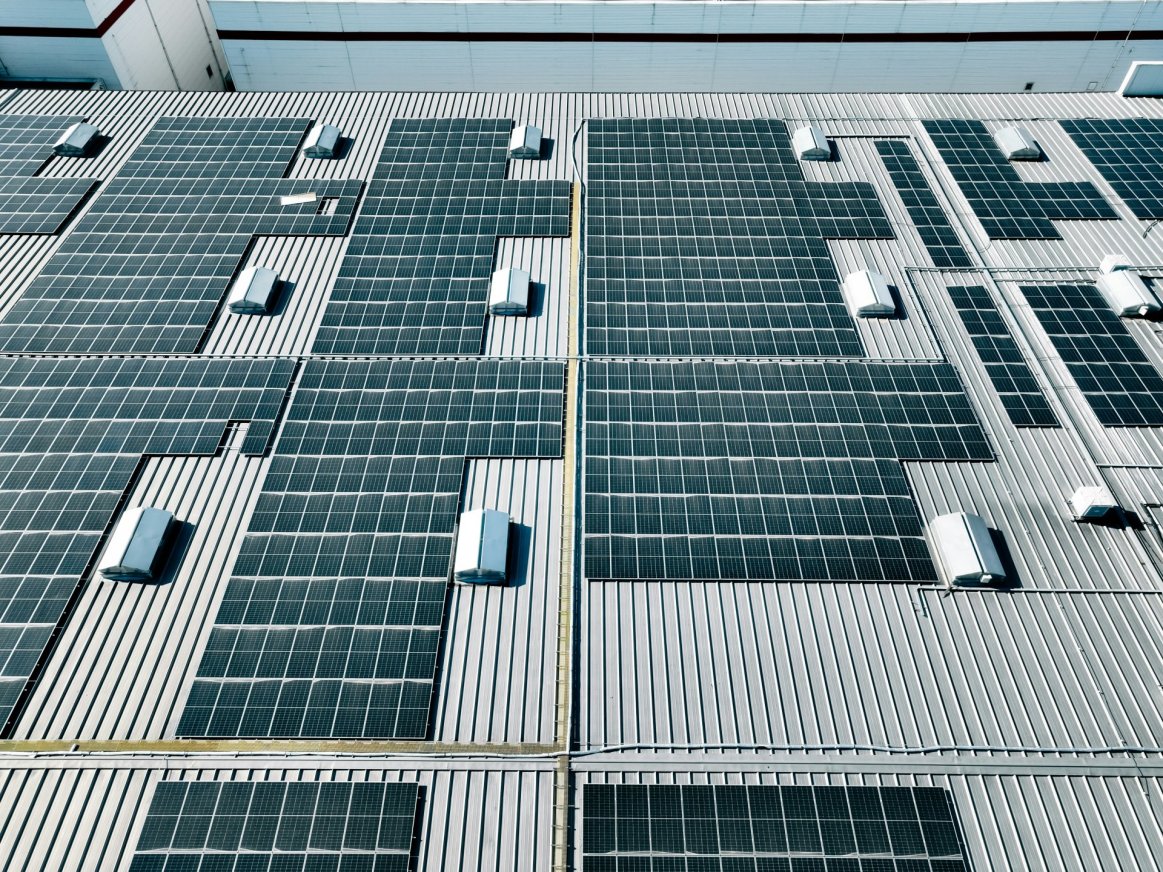
Introduction
Greentech Renewables operates at the vanguard of emerging solar and energy storage applications. We’re seeing significant growth in the deployment of commercial energy storage applications, as utilities increasingly shift their cost recovery into storage-addressable tariff structures, such as Time of Use and Demand Charges. This article is intended to support our customers' investigation into energy storage as a means to mitigate commercial utility costs.
Our team of design professionals supports diverse use cases and applications nationwide. Please contact us to discuss your project or for help evaluating your business's energy expenses.
Use Cases
Commercial energy storage can be applied to a broad spectrum of energy system and energy cost management strategies, including: (1) off grid; (2) resiliency (backup power for critical loads); (3) demand management; (4) self-supply of self-generated energy, such as solar energy; (5) energy arbitrage opportunities; (6) virtual power plants, grid services, and similar aggregations; or, (7) some stack of the foregoing strategies and value streams.
Off-Grid
In the case of off-grid applications, Greentech Renewables can support owners and installers in evaluating expected energy loads, consumption trends, and budget toward designing a robust off-grid power system tailored to an owner's needs. This starts with identifying all current and future loads and consumption trends, from which we work backwards to system sizing and component selection.
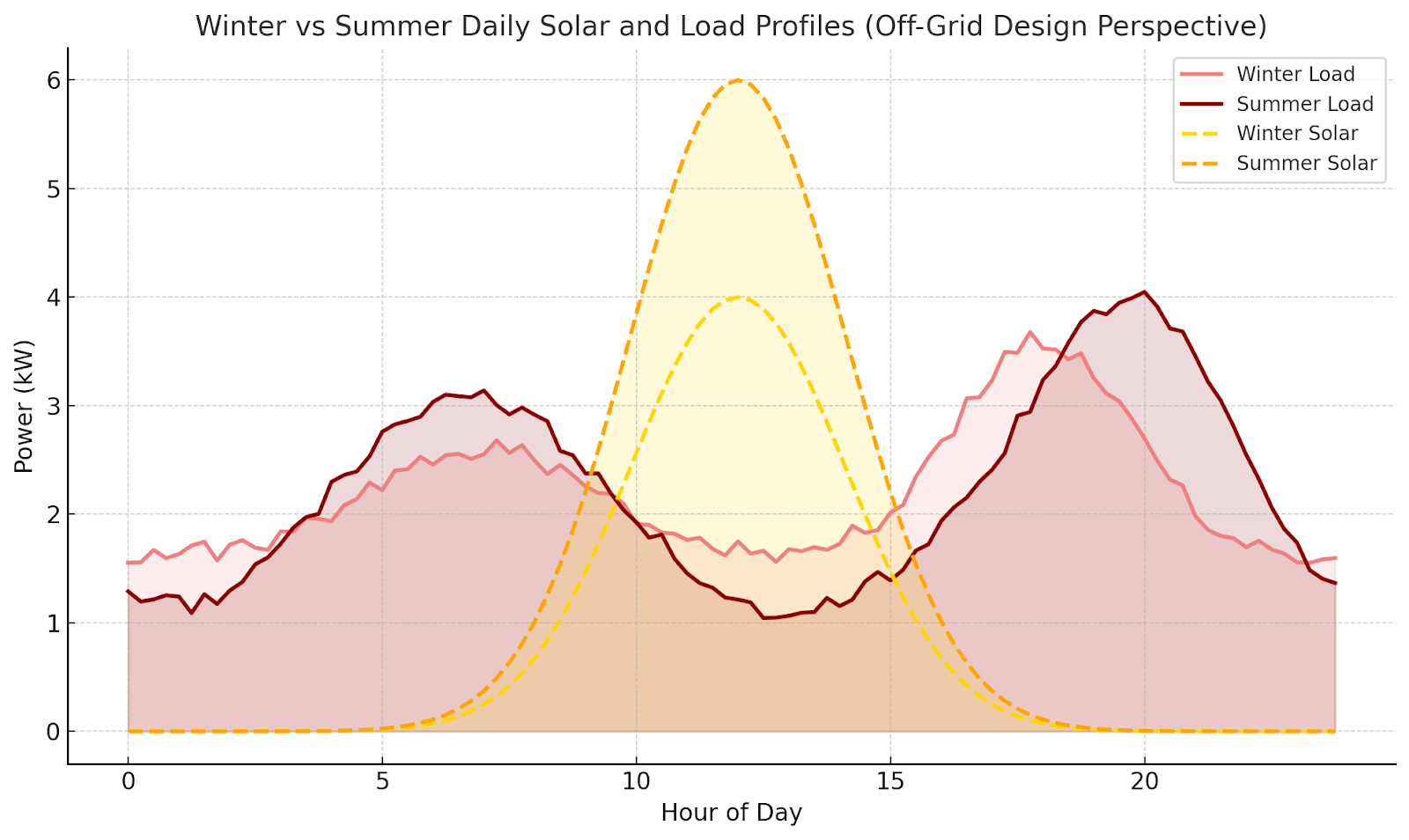
Resiliency
Resiliency solutions are designed to act as a stopgap in the event that grid power is lost. These projects are approached similarly to off-grid when sizing for a given scenario. We start with the subset of loads that need to remain powered during a grid outage. We then review historical outage trends, on-site consumption trends, and budget to determine system sizes and component selections for the application.
It can be constructive to approach these projects by asking, How much does energy downtime cost my business? The operating loss incurred during a grid outage, measured in some equivalent of 'operating loss per hour of power outage,’ can help put a price on resiliency.
A full day of solar self-consumption with battery storage versus typical loads. It illustrates:
- Solar generation peaks midday
- Load peaking in the morning and evening
- Battery charging during solar surplus and discharging to cover the load after sunset
- And results in reduced grid imports
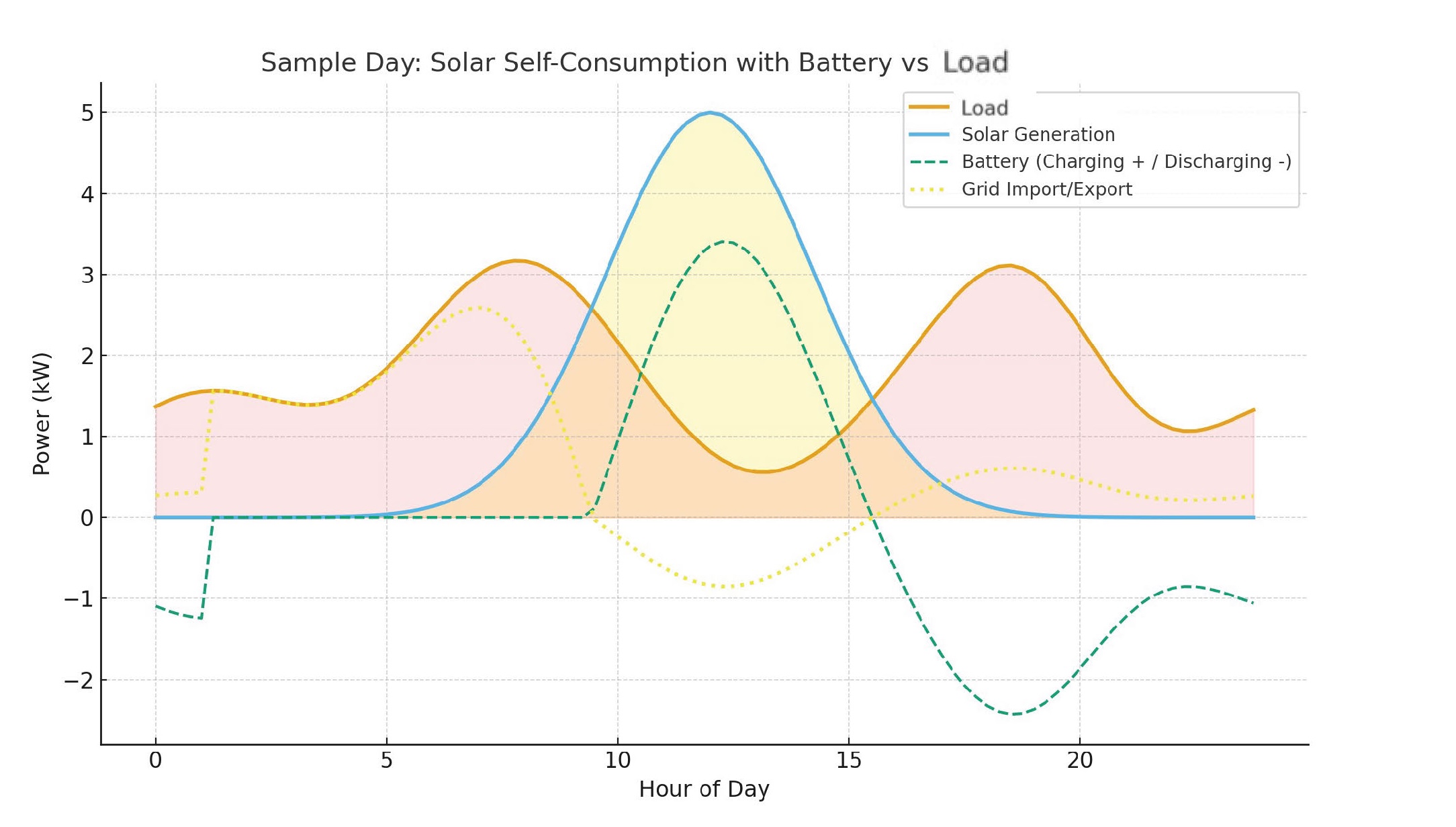
Demand Management
Demand management applications are directed at minimizing a site's 'demand charge' energy cost component. Demand charges are a cost recovery method that many utilities around the country use in their rate structures.
Energy charges, as distinguished from demand charges, are priced $/kWh and are designed to charge a customer for the number of kWh consumed on a given meter. This compensates the utility for the cost of generating baseload power. However, utilities also bear substantial costs in transmitting that power – in maintaining lines, in supporting voltage and frequency system-wide, in balancing sources, in providing adequate resource redundancy while also maintaining rapid resolution systems for when the unexpected occurs – and in ramping up power capacity in response to fluctuating consumption across the grid.
Demand charges are priced $/kW and, rather than measuring energy consumed, they instead measure the maximum power demand within a given time interval, often measured every 15 or 30 minutes. This maximum power demand is a great proxy for a given utility customer's burden on the system, with respect to the overall stress or depreciation that the customer imposes on the wires and other infrastructure used to generate and transmit power in support of the customer's peak power need. To illustrate: a 120kW power draw for one hour a day is much more stressful on the grid than a steady 5kW power draw throughout the day, though both examples would consume the same energy (120 kWh).
Demand charges are occupying an increasing share of commercial utility customers' energy bills, and there are robust energy storage solutions available today to mitigate those expenses with compelling internal rates of return. We begin by evaluating a site's load profile – that is, its consumption trends, or how much energy a site is consuming and when the consumption occurs. Owners and installers can often (but certainly not always) obtain this load profile data from their utility by requesting their meter's interval data. This interval data shares the utility's measurement of coincident power demand for the site over the given interval, whether 15-minute or 30-minute, or otherwise. Without utility support, owners can measure their own interval data to obtain representative samples, which Greentech can support.
With interval data in hand, we look for peaks in consumption, which drive corresponding spikes in demand charges. Oftentimes, we find that sites can substantially reduce demand charges through practical behavioral change: if only the nation's schools would stagger their appliance activation in the morning, instead of turning everything on right at 5 am and slamming the grid with demand!
For stubborn demand charges driven by business-critical load profile forms, energy storage can present a meaningful investment case. We help our customers evaluate these opportunities, size and specify systems, and evaluate potential savings.
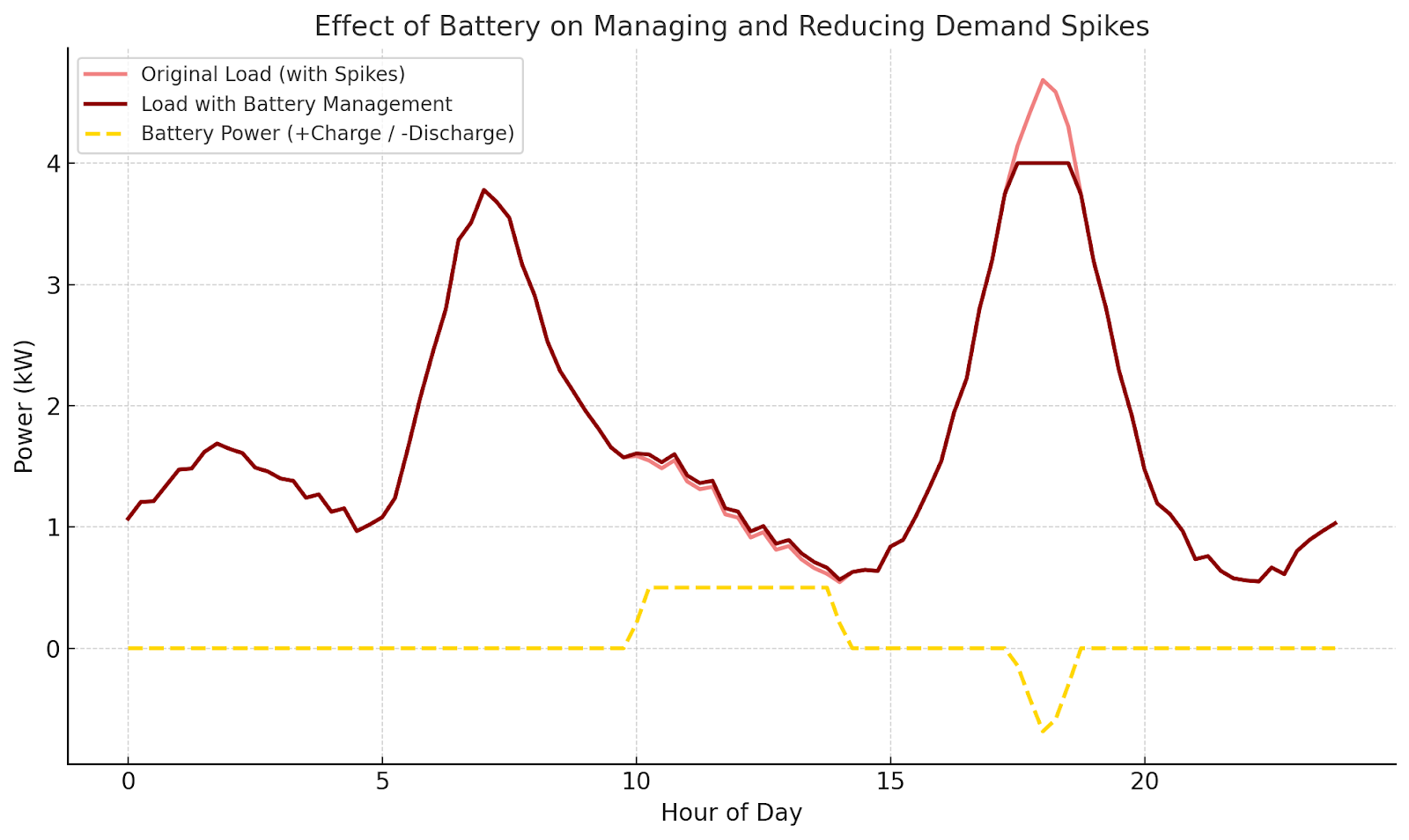
How a battery system smooths demand spikes:
- The light coral line shows sharp original load peaks
- The dark red line shows the flattened demand after the battery intervenes
- The gold dashed line shows the battery charging and discharging to cap peaks and store excess power
Self-supply
Self-supply applications are, like demand charges, being increasingly incentivized by utility rate structure changes across the US. The California Public Utilities Commission recently eliminated net metering in the state and introduced the new Net Billing Tariff structure, which more strongly promotes self-supply by disincentivizing grid export. Energy costs nationwide are on an upward trend with little sign of abatement, while the levelized cost of energy storage is following a solar-esque downward curve. Self-supply will enjoy growing attractiveness as the utility and energy storage cost curves inflect.
Rate Artbitrage
Another emerging viable storage application is simple rate arbitrage: charge a battery when grid power's cheap and use it when grid power's expensive. The levelized cost of energy storage (that is, the total cost of installing and maintaining the battery, over the net kWh available to withdraw from the battery across its useful life, yielding a $/kWh cost for battery-stored kWh) is approaching a level where the disparity between on-peak and off-peak rates under Time of Use energy tariffs can incentivize rate arbitrage with batteries.
VPP, grid services, aggregations, etc.
The recent emergence of legitimate Virtual Power Plant (VPPs) is perhaps the most exciting of all use cases! There is a vision of the future grid that looks a lot like a torrent network — a complex network of seeds and peers, each contributing energy to and consuming energy from a locally self-balancing grid. By its locality and its diversity of input it will be a hyperresilient grid, less susceptible to natural disasters and threat actors alike, and less dependent on costly infrastructure upgrades to keep up with our growing energy demand. And because photovoltaics are simply the cheapest means by which to generate energy today, powering this network with a ton of PV means it is also a sustainable and less polluting grid.
FERC's recent Orders 841 and 2222 are compelling RTOs and ISOs to evolve the grid in alignment with this vision. Greentech partners with the industry's leading equipment and service providers to assess and pursue these monetization opportunities on the grid's cutting edge.
Conclusion
Greentech Renewables enables energy storage projects through our expertise, our leading in-house services, our relationships with the industry's foremost manufacturers, and our nationwide reach from our 100+ locally-managed distribution centers. We invite you to please reach out if you have any questions, and we will be motivated to help you achieve your energy storage goals.
